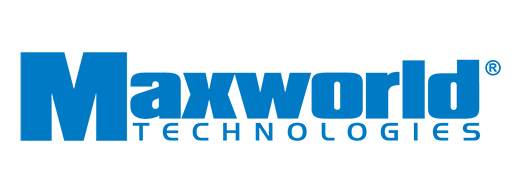Maxworld LiFePo4 Battery - All in one solution
Overviews:
These new lithium-ion Maxworld LiFePO4 battery is typically ideal replacements for many 12V and 24V ships, automobiles, caravan, RV‘s, work vans and similar battery applications. If the smallest 20Ah version is used, it might even work for land motorcycles; For example, charging a camera, cell phone or laptop.
Other examples – a typical small boat or van, for example, might have a 110Ah to 220Ah lead-acid leisure battery for lighting, laptop, phone, instruments, powering diesel heaters, refrigerators, etc. For short-term loads, you can add a small inverter to charge power tools, run a small microwave or travel kettle. Using a Maxworld Power battery, it is a perfect match for the Phoenix Inverter VE. Direct 250Va-1200VA range. Maybe you can also use a small MPPT to add about 100 to 200Wp solar panels.
Whatever the purpose, whichever Maxworld Power you choose, it will be lighter than lead, smaller if you like, or give you more Wh – in the same space plus about 5x cycle life.
The main difference with Maxworld Power’s other lithium products is that our new model put everything in one package with built-in integrated BMS and safety switches. No additional components are required because the internal switch will disconnect the battery in case of overdischarge, overcharge, or high temperature. Simple, compact, and safe.
If you’re considering buying a new battery, don’t immediately discount lithium because it’s too expensive. While lithium-ion does have a higher cost of capital than premium AGM or gel batteries, it does have a lower cost of ownership than lead-acid types. Much depends on your application, but rest assured – life with lithium-ion batteries is far easier than with lead.

When to use Maxworld LiFePo4 Battery
Each battery size and type has a specific use. For example, you can use 12,8V and 25,6V Smart lithium batteries in completely different applications than the new series. So where do Maxworld Power batteries work?
When replacing lead-acid batteries such as AGM and Gel in many applications, the new series can be considered the next generation of batteries after lead, which is much easier to replace with lithium. The only warning that needs to be replaced is to meet certain parameters, namely capacity (Ah), voltage (12.8V and 25.6V), discharge and charging current (C rate). In this case, make sure the alternative you choose meets your criteria, and note that Maxworld Power can be connected in parallel, but not in series. Therefore, in this case, you will consider the other Maxworld Power lithium products mentioned above.
Maxworld Power’s recently launched lithium battery range has the following capacities and voltages:
12.8V and 25.6V lithium batteries:
12.8 V – 60 AH
12.8 V – 100 AH
12.8 V – 200 AH
25.6 V – 50 AH
These new products will give you 2,500 cycles up to 80% discharge depth at 25°C, far more than lead.

Comparison: Maxworld Power 60Ah LiFePo4 vs. 90Ah AGM
Let’s compare the 60Ah lithium ion battery with the typical 90Ah AGM battery discharging to the generally accepted economic cycle life of 50% lead discharge. This will allow us to perform 600 cycles on the DOD AGM and 2,500 cycles at the deeper 80% discharge of LiFePO4. You’ve seen that you may need to replace a lead-acid battery 2 to 4 times more often than a lithium battery. Of course, load, operating conditions and calendar life must also be taken into account. No matter what you think — lithium is more useful and lasts longer.
Lithium’s benefits don’t stop there. While LiFePO4 chemistry is considered the safest of all chemicals, it is also worth considering other factors to determine whether the weight and volume reduction of the NMC is more important for your application than LiFePO4.
If a lead-acid battery is run in depleted mode for an extended period of time (that is, if the battery is rarely or never fully charged), it will fail prematurely due to sulphuric acid. It will also fail prematurely if it is partially charged or, worse, fully discharged.
By comparison the lithium-ion batteries do not need to be fully charged. This is a major advantage over lead acid, which needs to be charged frequently to prevent sulphidation.
Efficiency. In some applications, notably off-grid solar, energy efficiency can be crucial. The round-trip energy efficiency of the average lead-acid battery (from 100% discharge to 0% and back to 100% charge) is 80%.
Lithium-ion batteries have a round-trip energy efficiency of 92%.
The process of charging a lead-acid battery becomes particularly inefficient at 80% charge, resulting in a few days of storage (the battery is charged at 70% to 100%).
Lithium-ion batteries, by contrast, are 90 per cent efficient, even under shallow discharge conditions.
Conclusion
No matter what decision you make when buying a new battery, maybe it’s time to give Maxworld Power batteries a chance. You know, there’s LiFe after Lead you know — but as I’ve shown, it all depends on what you want to achieve. Is it lighter weight, smaller size, maybe capacity or voltage, or any of the many factors that go into choosing a battery system?
No matter what you choose, Maxworld has many choices – with many battery types and sizes at www.maxworldpower.com.










